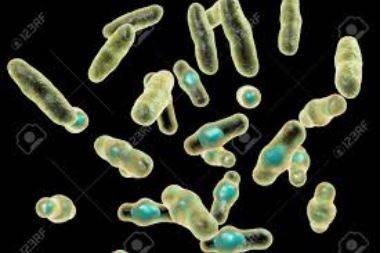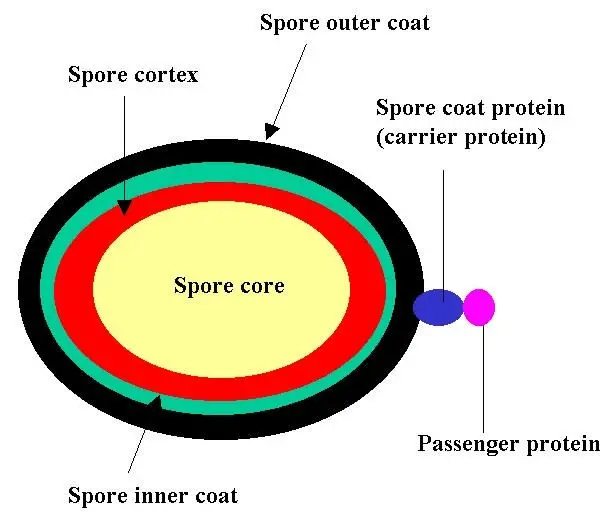Notices to purify water for drinking are mostly issued by health agencies responding to conditions that generate a possibility for contamination in the drinking water. But people wonder whether boiling water kills all the bacteria and pathogens.
The most common reasons for boiling water include disinfecting it, unexpected problems in water quality, and the water distribution system’s lack of pressure. But the question is, which bacteria survive boiling water?
Clostridium bacteria can survive in boiling water even at 100 degrees Celsius, which is its boiling point for several minutes. This is because its spores can withstand temperatures of 100 degrees Celsius. However, all waterborne intestinal pathogens are killed above 60 degrees Celsius.
What Bacteria Can Survive Boiling Water?
The Clostridium botulinum bacteria are among the hyperthermophiles. A hyperthermophile is an organism that thrives in very hot environments of 60 degrees C. Mainly, they are found in the domain Archaea.
However, Clostridium is not a waterborne intestinal pathogen, and hence ingesting it does not cause infection. Therefore, boiling it might not be completely effective against such pathogens, and other methods of disinfecting it might come in handy.

Though various bacteria such as the Clostridium bacteria, can withstand temperatures of 100 degrees C, others can thrive in temperatures above 100 degrees Celsius in large sea depths where water doesn’t boil due to high pressure.
Most hyperthermophiles can withstand other extreme environments such as high radiation or high acidity levels.
These organisms are extremophile subset
The protein molecule contained in the Hyperthermophile shows hyperthermostability, which means it can keep its structural stability and still function at very high temperatures.
These proteins are homologous to their working analogs in organisms that can survive lower temperatures. Most hyperthermostable protein`s low-temperature homologues are denatured above 60 degrees Celsius.
Such hyperthermostable proteins are sometimes commercially important since chemical reactions can proceed more quickly at high temperatures; hence, the Hyperthermophile can survive in temperatures above 100 degrees.
How bacteria survive boiling water
Boiling is effective in killing most active bacteria at the time, such as salmonella and E. coli. However, some species of bacteria can create inactive seed-like pores.
Commonly these dormant spores are found in dust, farmland soils, field-grown grains and vegetables, and on animals. These spores can withstand high boiling temperatures.

After the water is boiled and its temperature goes below 130 degrees, the spores germinate and start to grow, increase, and produce toxins. Clostridium botulinum is an example of a spore-forming bacterium.
After the water is boiled and its temperature goes below 130 degrees, the spores germinate and start to grow, increase, and produce toxins. Clostridium botulinum is an example of a spore-forming bacterium.
Once they have germinated, bacteria multiply rapidly in nourishing stock. They can increase their numbers at room temperature every 90 minutes and at body temperature every 15 minutes.
One germinated spore will convert to 1000 bacteria in very few hours and a billion in very few days. After boiling water and leaving it sitting for two or more days, it accumulates high levels of Clostridium perfringens cells or Bacillus cereus with their toxins.
The Causes of bacteria and pathogens in water
These often result in the event of reasons like treatment disruptions, water line breaks, floods, and power outages. The standard recommendations to boil water are one minute of a full rolling boil then cool it before use.
Some agencies recommend that you boil the water for a longer time to purify it. however, boiling water for extra time is not necessary for it can cause increased safety concerns and unnecessary power damage.
Because some users are susceptible to illnesses caused by waterborne pathogens, public health officials have to act quickly to arrest the water quality problems.
However, boiling water is not necessary when chemical contamination is present in the water. This may cause volatilization to the breathing zone.
Does boiling water kill all bacteria and parasites?
Boiling water makes it safe by purifying it for drinking by killing all common pathogens. The amount of time taken to bring water to a boil is enough to reduce the pathogens to some safe levels.
When the boiled water is allowed to cool slowly prolongs the exposure of all waterborne intestinal pathogens to dangerous temperatures. Boiling water gives a visual indicator that the temperature is high enough where there is no thermometer.
Various types of spores usually survive to boil, but most of them are not disease-causing, or they cannot make anyone sick.
Research indicates waterborne pathogens are killed or inactivated at temperatures of 100 degrees C below boiling. Therefore, boiling water below that temperature does not fully make it safe for drinking.
It should be noted that boiling water does not do much in breaking down heavy metals and chemical contaminants; hence, it is uncertain if it destroys all microbial life.
The question is whether any bacteria, viruses, or protozoa can survive boiling water. If so, then we should be wary of the diseases they are associated with. And how serious are the sicknesses they cause?
How Long Does Boiling Water Take to Kill Bacteria?
The best way to purify water is by boiling it for the right time and at the right temperatures. However, this always pops up the question of how long you need to boil water to kill viruses, protozoa, and bacteria which are hazardous to human health.
To kill all the bacteria, you need to boil your water at temperatures of at least 60 degrees Celsius for at least ten minutes. This is to sustain the temperature for a long to kill all the pathogens that survive boiling.
However, the exact temperature and amount of time depend on the characteristics of the pathogens, which are different between species.
To understand what amount of time boiled water takes to kill bacteria, it is good to know what the process of boiling water will do to the pathogens.
For instance, any active bacteria are destroyed by boiling water at 150 degrees for a minute, while botulism toxin can be inactivated by boiling the water for 10 minutes.
What pathogens does boiling water kill?
Boiling water destroys viruses, protozoa, and bacteria by changing the configuration of proteins, coming to an end with denaturation. By ruining their enzymes, and membranes, you counteract their ability to be lethal and cause disease.
However, the efficiency of pasteurization mainly depends on the amount of time the water boiled, and the bacteria to be killed.
However, reheating some contaminated water to room temperature will not kill active toxins and bacteria and will cause sickness to people.
Time and temperature various bacteria will survive boiling water
The amount of temperature and time needed to kill different types of viruses and bacteria depends on which kind of virus or bacteria you want to kill some examples are:
| The Bacteria | Boiling time survival | surtvival Temperature |
| Giardia species | 5 minutes of boiling | 55 degrees C |
| E.coli | 5 minutes | 60 degrees C |
| Salmonella species | 3 minutes | 65 degrees C |
| Campylobacter Species | 3 Minutes | 65 degrees C |
| Shigella Species | 3 minutes | 65 degrees C |
From the examples above, it is clear that some bacteria can survive for up to five minutes in temperatures of 100 degrees C.
Therefore, it is important to boil water for at least 5 minutes and at 100 degrees C, which is temperatures beyond 65 degrees C. Read this article to learn more about how long you need to boil water to kill bacteria at home.
Do Bacteria die or survive in Boiling Water?
Boiled water kills microorganisms and bacteria. However, the extent of destruction depends on the bacteria’s and various microorganisms’ heat resistance, the temperature, and the length of time that the microorganisms and bacteria are susceptible to the boiled water.
Additionally, the number of organic materials like plant particles and food present can affect the extent of destruction of the microorganism when vulnerable to boiling water for a particular time and temperature.
Contaminated water for drinking should be kept boiling for not less than one minute to destroy most kinds of illness-causing microorganisms that are present. Extremophiles don’t only survive, but they also multiply at 100-135 C.
However, bacteria can create spores that survive 100C and later when there is food and things cooled down, they come back. Pathogenic bacteria can survive at 37C although most of them die at 100C.
Final Take
From the above discussion, we have been informed that some bacteria can survive boiling water. Feel free to read more about Clostridium Botulinum bacteria and why it survives the boiling point of water.
However, they cannot cause illness to humans, some can survive 100 degrees of boiling water. Despite that, you need to boil your water for at least ten minutes at temperatures of 60 degrees Celsius.
Doing this will eliminate the disease-causing microorganisms and bacteria to have purified drinking water, you should also adhere to the time you should boil water for what kind of bacteria and at what level of temperature required for each organism, hence have safe drinking water.

I am a homeowner excited by various innovative products and solutions that make life better. I am happy to share such ideas and reviews of home and related products.